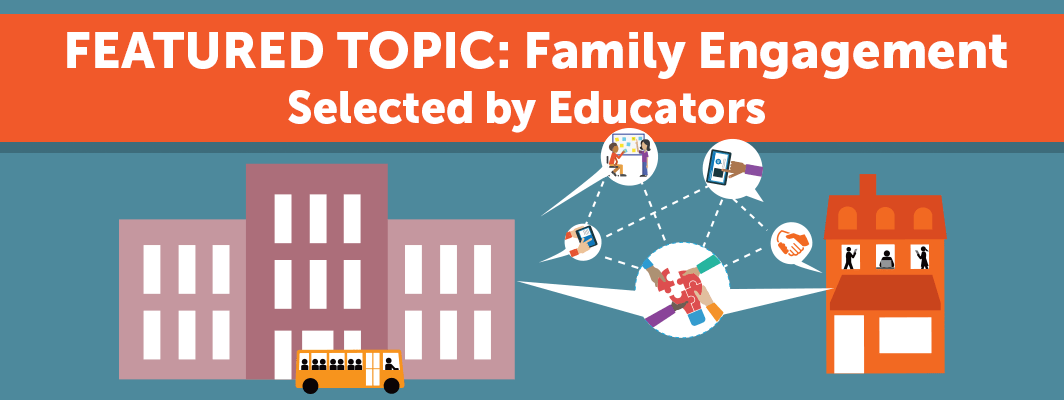
April 10, 2018 | By Babe Liberman
Yet, successful partnerships between schools and families are challenging to implement. Logistical issues such as demanding work schedules, transportation difficulties, and trouble finding child care can make it hard for families to get involved. There are even more barriers for low-income families, families of color, and immigrant families, who may have had negative interactions with schools in the past, may not feel comfortable or welcome at schools due to discrimination, or may lack knowledge of school systems and ways they can be involved.
Below we share two research-based ways schools are engaging families. To learn more, check out the Family Engagement Featured Topic Page on the Digital Promise Research Map.
Chris Reasor, English as a New Language Coordinator at P.S. 171 Patrick Henry in Harlem, describes his school’s goal for family engagement as a regular open line of communication connected to student learning. This communication can be especially challenging when working with non-English speaking families.
Reasor helps teachers adopt solutions, including Language Line, a service that can connect instantaneously to interpreters in over 200 languages via iPads, and an SMS program called Talking Points that translates text messages back and forth, enabling teachers to communicate with families in their home languages. These programs can be used in combination with tools like Google Classroom that let parents view and track their children’s assignments (which can be difficult at schools where most work is submitted digitally instead of on paper, coming home in backpacks!). Teachers also use these tools to send families photos of their children at work in the classroom along with descriptions of assignments, opening up a dialogue and inviting teachers and parents to message back and forth on a more regular basis.
Reasor says this communication is key: no matter what language they speak, families are in touch with what students are working on, which can help spark conversation and continue the learning at home. His practices are in line with research findings that indicate schools should provide multiple ways for families to engage, and that specific messages, focusing on the individual student’s progress, are most effective.
Kisa Hendrickson, Chief Engagement & Partnership Officer for Highline Public Schools near Seattle, says that in order for Highline to be a culturally responsive organization, it is critical to connect with families on a deeper level to understand more about where their students come from, who they are, and their values and beliefs. While it can take time, particularly for families and communities that have not had good experiences in public schools, or have felt disenfranchised by the public school system, Highline is resolute on establishing trust between families and the district.
One strategy used at Southern Heights Elementary School involves dedicating a portion of every staff meeting for staff to write out postcards to individual families, including specific, encouraging messages about how the student is doing. These affirmative messages, which focus on student learning rather than negative communications such as poor attendance or behavior, create a positive connection with a family member. Hendrickson likes that writing postcards takes a small amount of time, but can lead to significant impacts. Other district efforts to increase engagement and trust include partnerships with grassroots community organizing groups and a Family Action Committee.
These exemplars show that customized family engagement is possible, but we know that many schools and districts still feel unprepared to engage families and ill-equipped to overcome the obstacles mentioned above. In a survey to our audience last fall, family engagement was selected as a top area of interest to receive more research resources. Respondents shared that this topic is a crucial need in schools today, and though there have been some promising first steps, there’s also room to build stronger school-home connections.
To meet these needs, we’re pleased to launch Family Engagement as the next Featured Topic on the Digital Promise Research Map. This new page includes a research summary with key findings, such as the the potential of quality family engagement programs to improve academic achievement, learning attitudes, motivation and self-efficacy. We’ve also curated practical resources from organizations including EdSurge, Common Sense, and the Office of Head Start for educators looking to boost their family engagement efforts. Dig in to promising research and get ideas about how to partner with families at your school.
By Jeremy Roschelle, John Whitmer and Peter Bull
By Adrianna S. and Kyrie F.